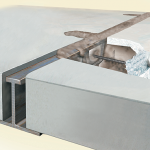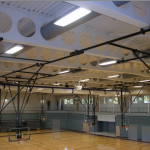How Wide Flange Beams Are Manufactured
Wide flange beams: In today’s manufacturing and construction industries, these particular fixtures have become more valuable in the eyes of professionals because of the significant difference they make.
Whether you want to build a construction facility, a full manufacturing plant, or a commercial site, the opportunity to invest and use these tools is one that you can’t overlook. However, these products’ relative unfamiliarity can cloud the value of investing in them to the point where you end up missing out on a crucial opportunity to reinforce your structure in the best way possible.
A guide to everything you need to know
Thankfully, we’ve got you covered with this comprehensive guide to everything you need to know about wide flange beams so that you can make the most informed decision possible:
What are wide flange beams?
Named after their shape, wide flange beams offer a more reinforced and improved approach to structural rigidity and foundational improvement.
Compared to regular I-beams and other options, these beams are unique due to their parallel sides that are akin to flangers because they’re manufactured to be much wider than expected measurements. It may not seem like much at first, but this simple tweak opens up a wide range of different guaranteed benefits, such as:
- Higher weight-bearing capacities
- Improved pressure bearing levels
- Enhanced structural integrity and stability
- Fortified resistance to bending and twisting due to excessive forces or weight
With these benefits, contractors and builders have switched over to using wide flange beams in various projects, such as beams, bridges, columns, and other structures, which required enhanced structural support!
How are they manufactured?
At C-Beams, we follow a process called caliber rolling (or a process that is simply known as “rolling”) to craft wide flange beams.
Often conducted during the roughing stage of beam formation, the caliber rolling process helps ensure that each flange is created to meet precise manufacturing standards and set measurements. The resulting flanges are precisely and efficiently created once these steps carried out:
Step #1: Caliber rolling
The steel is rolled by caliber rolls themselves to create the same cross-sectional shape as that of the rolls. This particular step is called “rolling” because it happens whenever a beam blank (the unformed length of steel) is heated and then “rolled out” to set the right foundation for top-grade results.
Step #2: Fine-tuning
After the caliber rolling process, the resulting beam will look roughly H-shaped—which signals that it is ready for fine-tuning. To start this process, a beam is fed through a universal mill that comprises H-rolls and V-rolls that are rolled horizontally and vertically along the beam. These specific rolls are vital because they’re critical in ensuring that the beam stays in place while constantly forming the steel into an H-shape.
After the bulk of the fine-tuning process itself, the H-shaped cross-section is fully formed when the material passes through the universal mill. Alternatively, the beam can also be fed through an edging mill to adjust the flange widths based on any custom specifications a customer may request for.
Conclusion
If you want to provide your building or structure with the fortification it needs to remain durable and dependable as much as possible, then it’s best that you invest in wide flange beams. With this guide’s help, you can cultivate a much better understanding of what goes into the parts that help reinforce your construction project’s overall structural rigidity and dependability!
C-Beams is one of the best steel beam suppliers in America that can help provide you with the wide flange beams for your construction site’s needs! Get in touch with us today to learn more about how we can provide your next project with top-level design assistance, manufacturing, and project management services!






